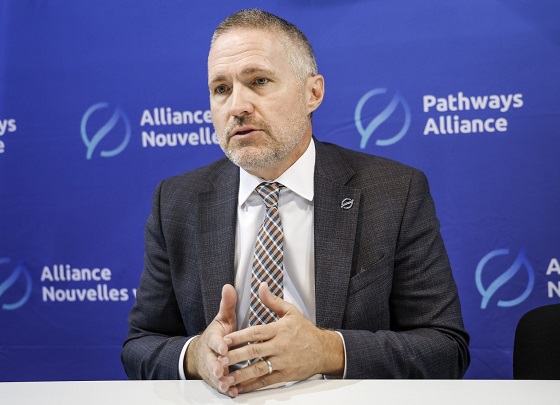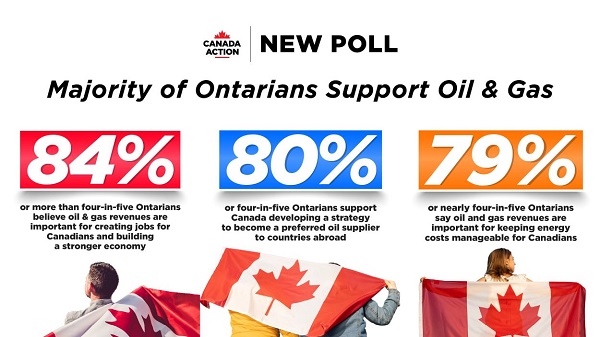Business
Navigating the country’s telecommunications landscape a tricky task: Peter Menzies

From the MacDonald Laurier Institute
By Peter Menzies
On the telecom side of things, the CRTC’s long-standing focus on the fundamental issues of access and affordability is far more tangible than the ethereal cultural ambitions that have swamped the broadcasting boat
Canada’s communications policy playing field is more uncertain today than it has been in decades.
The cause is primarily the Online Streaming Act (Bill C-11), which attempts to “modernize” the Broadcasting Act by defining all internet-based audio and visual content as “broadcasting.” Promoted by a series of heritage ministers as a simple matter of ensuring that streaming companies support Canadian content, the act has alarmed a thriving community of unregulated online creators while causing targeted offshore operators to question how they can continue operating in Canada.
Canadian Radio-television and Telecommunications Commission (CRTC) chair Vicky Eatrides, appointed last January, is clearly feeling pressure to implement Bill C-11 as quickly as possible. Following a series of rushed preliminary processes that made it challenging for many companies in the regulatory “rookie” category to participate, the CRTC’s first public hearing is scheduled for Nov. 20.
It involves 127 intervenors, is scheduled to last three weeks, and Eatrides hopes to have initial decisions made by the end of 2024.
With all her staff’s hands to the pumps on that file, Eatrides has shut down dealing with new licensing matters in the traditional broadcasting fields of television and radio for at least two years. All TV licences up for renewal this year were administratively renewed until 2025 (Bell has filed a court appeal). All of those expiring next year were renewed as is until 2026, and the radio industry was informed the CRTC won’t accept applications in that genre for at least two years, putting it in a regulatory cryo-chamber.
Meanwhile, active broadcasting files have been triaged to the extent that they are backed up, in some cases for years, leaving those involved without the decisions they need. The renewal of the CBC’s licence, for instance, remains incomplete 33 months after the CRTC’s public hearing into the matter.
On the telecommunications side, life is much more steady as she goes. Early in July, the CRTC laid out what it described as a more streamlined and flexible manner for determining wholesale access rates with the goal of fostering competition. But these matters are rarely dealt with swiftly, and incumbent companies affected by this new—and, to many, refreshing—approach have a long track record of being able to drag things out.
Competitor access rates is a matter that has preoccupied the CRTC for a decade; the rates have wavered back and forth since at least 2016, and the lack of regulatory certainty has had a debilitating impact on smaller service providers. The largest of those—TekSavvy—threw in the towel early this summer and put itself up for sale.
The management of so-called mobile virtual network operator rates, particularly relevant in the shadow of Quebecor’s purchase of Freedom Mobile, has moved along efficiently. This is another positive sign involving an area in which the CRTC is attempting to foster competition with increased regulatory certainty. When it comes to the telecom side of things, the regulator’s long-standing focus on the fundamental issues of access and affordability is, while complicated in terms of implementation, far more tangible than the ethereal cultural ambitions that have swamped the broadcasting boat.
Two other matters are worth watching.
The first—the CRTC’s role in overseeing negotiations as foreseen in the Online News Act—may evaporate. Meta has moved out of the business of carrying news in Canada, with disastrous consequences for those in the business of creating it. News Media Canada, the industry’s lobbying arm, is now asking the government to bow to Google’s demands before it does the same.
That could mean significant legislative amendments which could eliminate the CRTC’s role entirely. Seeing as the commission has already delayed decisions on which news organizations would qualify until late 2024, this would be a welcome relief.
The second will be whether the CRTC, when dealing with the likes of Disney and Netflix next month, realizes what’s at stake. The United States-based companies aren’t interested in contributing solely through official funds while all the commission appears to want to talk about is how much they should pay and to which funds.
Neither has threatened, as Meta and Google did with Bill C-18, to disconnect Canada if they don’t get the outcomes they need.
Not yet, anyway.
Peter Menzies is a senior fellow with the Macdonald-Laurier Institute, a former newspaper executive, and past vice-chair of the CRTC.
Business
Socialism vs. Capitalism

People criticize capitalism. A recent Axios-Generation poll says, “College students prefer socialism to capitalism.”
Why?
Because they believe absurd myths. Like the claim that the Soviet Union “wasn’t real socialism.”
Socialism guru Noam Chomsky tells students that. He says the Soviet Union “was about as remote from socialism as you could imagine.”
Give me a break.
The Soviets made private business illegal.
If that’s not socialism, I’m not sure what is.
“Socialism means abolishing private property and … replacing it with some form of collective ownership,” explains economist Ben Powell. “The Soviet Union had an abundance of that.”
Socialism always fails. Look at Venezuela, the richest country in Latin America about 40 years ago. Now people there face food shortages, poverty, misery and election outcomes the regime ignores.
But Al Jazeera claims Venezuela’s failure has “little to do with socialism, and a lot to do with poor governance … economic policies have failed to adjust to reality.”
“That’s the nature of socialism!” exclaims Powell. “Economic policies fail to adjust to reality. Economic reality evolves every day. Millions of decentralized entrepreneurs and consumers make fine tuning adjustments.”
Political leaders can’t keep up with that.
Still, pundits and politicians tell people, socialism does work — in Scandinavia.
“Mad Money’s Jim Cramer calls Norway “as socialist as they come!”
This too is nonsense.
“Sweden isn’t socialist,” says Powell. “Volvo is a private company. Restaurants, hotels, they’re privately owned.”
Norway, Denmark and Sweden are all free market economies.
Denmark’s former prime minister was so annoyed with economically ignorant Americans like Bernie Sanders calling Scandanavia “socialist,” he came to America to tell Harvard students that his country “is far from a socialist planned economy. Denmark is a market economy.”
Powell says young people “hear the preaching of socialism, about equality, but they don’t look on what it actually delivers: poverty, starvation, early death.”
For thousands of years, the world had almost no wealth creation. Then, some countries tried capitalism. That changed everything.
“In the last 20 years, we’ve seen more humans escape extreme poverty than any other time in human history, and that’s because of markets,” says Powell.
Capitalism makes poor people richer.
Former Rep. Jamaal Bowman (D-N.Y.) calls capitalism “slavery by another name.”
Rep. Alexandria Ocasio-Cortez (D-N.Y.) claims, “No one ever makes a billion dollars. You take a billion dollars.”
That’s another myth.
People think there’s a fixed amount of money. So when someone gets rich, others lose.
But it’s not true. In a free market, the only way entrepreneurs can get rich is by creating new wealth.
Yes, Steve Jobs pocketed billions, but by creating Apple, he gave the rest of us even more. He invented technology that makes all of us better off.
“I hope that we get 100 new super billionaires,” says economist Dan Mitchell, “because that means 100 new people figured out ways to make the rest of our lives better off.”
Former Labor Secretary Robert Reich advocates the opposite: “Let’s abolish billionaires,” he says.
He misses the most important fact about capitalism: it’s voluntary.
“I’m not giving Jeff Bezos any money unless he’s selling me something that I value more than that money,” says Mitchell.
It’s why under capitalism, the poor and middle class get richer, too.
“The economic pie grows,” says Mitchell. “We are much richer than our grandparents.”
When the media say the “middle class is in decline,” they’re technically right, but they don’t understand why it’s shrinking.
“It’s shrinking because more and more people are moving into upper income quintiles,” says Mitchell. “The rich get richer in a capitalist society. But guess what? The rest of us get richer as well.”
I cover more myths about socialism and capitalism in my new video.
Business
Residents in economically free states reap the rewards

From the Fraser Institute
A report published by the Fraser Institute reaffirms just how much more economically free some states are compared with others. These are places where citizens are allowed to make more of their economic choices. Their taxes are lighter, and their regulatory burdens are easier. The benefits for workers, consumers and businesses have been clear for a long time.
There’s another group of states to watch: “movers” that have become much freer in recent decades. These are states that may not be the freest, but they have been cutting taxes and red tape enough to make a big difference.
How do they fare?
I recently explored this question using 22 years of data from the same Economic Freedom of North America index. The index uses 10 variables encompassing government spending, taxation and labour regulation to assess the degree of economic freedom in each of the 50 states.
Some states, such as New Hampshire, have long topped the list. It’s been in the top five for three decades. With little room to grow, the Granite State’s level of economic freedom hasn’t budged much lately. Others, such as Alaska, have significantly improved economic freedom over the last two decades. Because it started so low, it remains relatively unfree at 43rd out of 50.
Three states—North Carolina, North Dakota and Idaho—have managed to markedly increase and rank highly on economic freedom.
In 2000, North Carolina was the 19th most economically free state in the union. Though its labour market was relatively unhindered by the state’s government, its top marginal income tax rate was America’s ninth-highest, and it spent more money than most states.
From 2013 to 2022, North Carolina reduced its top marginal income tax rate from 7.75 per cent to 4.99 per cent, reduced government employment and allowed the minimum wage to fall relative to per-capita income. By 2022, it had the second-freest labour market in the country and was ninth in overall economic freedom.
North Dakota took a similar path, reducing its 5.54 per cent top income tax rate to 2.9 per cent, scaling back government employment, and lowering its minimum wage to better reflect local incomes. It went from the 27th most economically free state in the union in 2000 to the 10th freest by 2022.
Idaho saw the most significant improvement. The Gem State has steadily improved spending, taxing and labour market freedom, allowing it to rise from the 28th most economically free state in 2000 to the eighth freest in 2022.
We can contrast these three states with a group that has achieved equal and opposite distinction: California, Delaware, New Jersey and Maryland have managed to decrease economic freedom and end up among the least free overall.
What was the result?
The economies of the three liberating states have enjoyed almost twice as much economic growth. Controlling for inflation, North Carolina, North Dakota and Idaho grew an average of 41 per cent since 2010. The four repressors grew by just 24 per cent.
Among liberators, statewide personal income grew 47 per cent from 2010 to 2022. Among repressors, it grew just 26 per cent.
In fact, when it comes to income growth per person, increases in economic freedom seem to matter even more than a state’s overall, long-term level of freedom. Meanwhile, when it comes to population growth, placing highly over longer periods of time matters more.
The liberators are not unique. There’s now a large body of international evidence documenting the freedom-prosperity connection. At the state level, high and growing levels of economic freedom go hand-in-hand with higher levels of income, entrepreneurship, in-migration and income mobility. In economically free states, incomes tend to grow faster at the top and bottom of the income ladder.
These states suffer less poverty, homelessness and food insecurity and may even have marginally happier, more philanthropic and more tolerant populations.
In short, liberation works. Repression doesn’t.
-

 armed forces1 day ago
armed forces1 day agoRemembering Afghanistan and the sacrifices of our military families
-

 Opinion1 day ago
Opinion1 day agoPope Leo XIV’s Christmas night homily
-

 Fraser Institute1 day ago
Fraser Institute1 day agoHow to talk about housing at the holiday dinner table
-

 Frontier Centre for Public Policy1 day ago
Frontier Centre for Public Policy1 day agoTent Cities Were Rare Five Years Ago. Now They’re Everywhere
-

 Fraser Institute15 hours ago
Fraser Institute15 hours agoCarney government sowing seeds for corruption in Ottawa
-

 Alberta15 hours ago
Alberta15 hours agoAlberta Next Panel calls for less Ottawa—and it could pay off
-

 Alberta5 hours ago
Alberta5 hours agoAlberta project would be “the biggest carbon capture and storage project in the world”
-

 Energy5 hours ago
Energy5 hours agoNew Poll Shows Ontarians See Oil & Gas as Key to Jobs, Economy, and Trade










